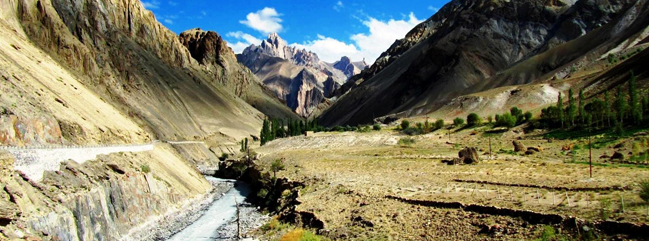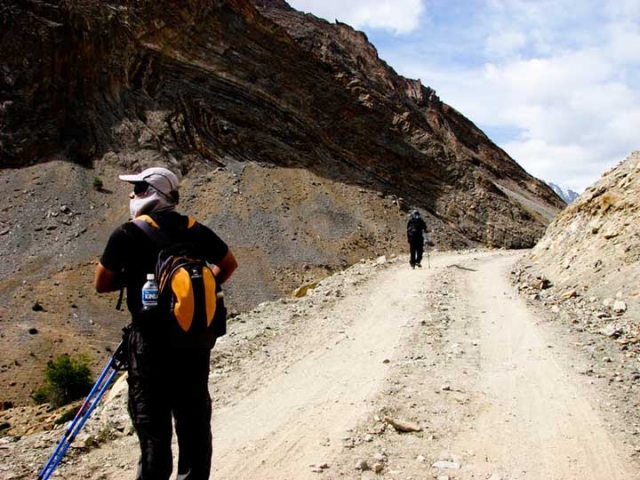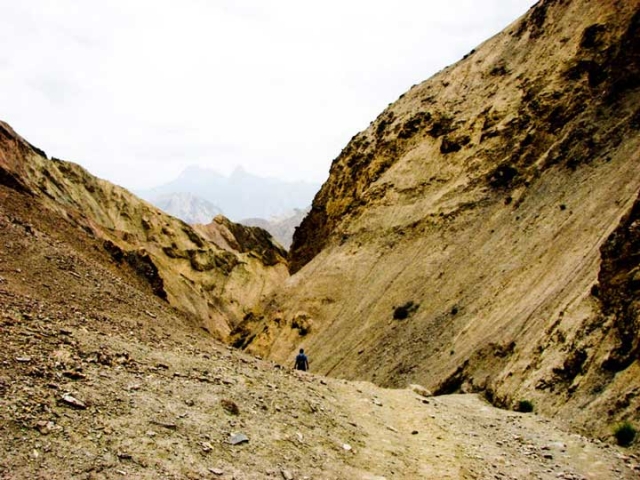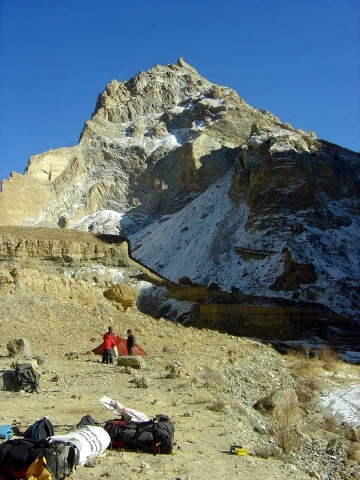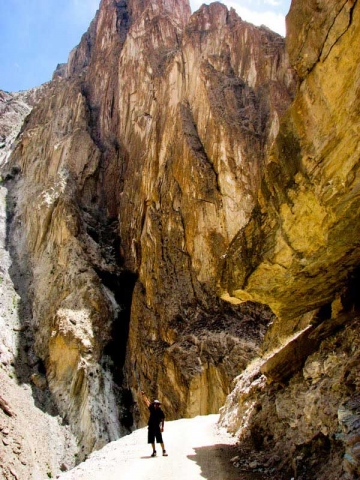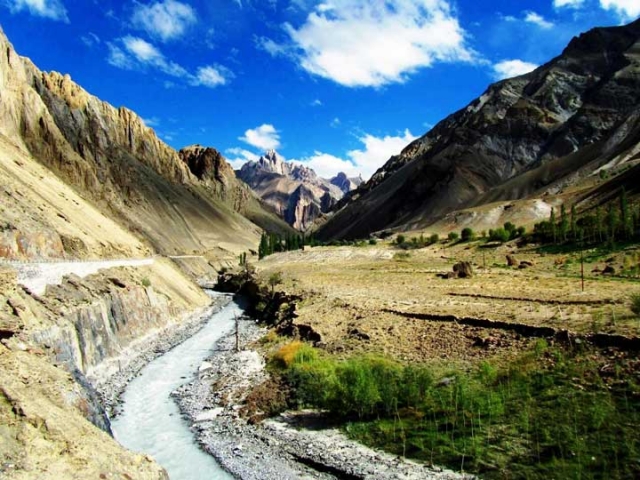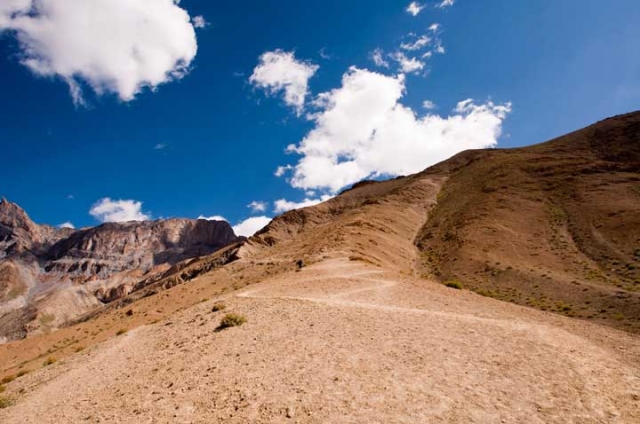The Adventurous Journey was started in the year 1998, the Zanskar Trek has emerged as one of the leading tour operators in a short span of time.
With nearly 10 years of experience in organising cultural, adventure and tailor made programme for a complete trip to Zanskar and Ladakh, spiti and other parts of india, we offer visitors a unique opportunity to enjoy the beauty and rich cultural heritage of the region like no others.
Known for its unmatched services, our dedicated staffs comprising of young local boys cater to each client’s specific taste and interest to make their trip enjoyable and a memorable one.
In addition to our scheduled tours, we operate tailor made tours that cater to a variety of special interest requests including cultural, study, religious, adventure and wildlife tours with hotels to 5 star services and accommodation.
We have also been associated with various humanitarian aid organisations like AAZ from France (www.azz.fr), HOPE Association from Switzerland and TOKSPO Association from France.
Ladakh being a very delicate and fragile ecologically, we at Zanskar Trek believe that it is our sole responsibility to protectthe beauty and unique natural heritage of this region. Considering the impacts of increasing number of visitors on the environment, we have initiated various eco-development projects in the region including distribution of saplings and re-greening of areas with native species and awareness generation among the locals.
Next time you plan to visit this part of the world, do provide us an opportunity to serve you.
Day 1 : Arrival at Delhi
There you will be met by our Airport Representative and transferred to hotel by private tourist vehicle. Overnight at hotel.
Day 2: Drive to Chandigarh,hotel
New Delhi to Chandigarh by Shatabdi and further transfer to Manali. Evening exploration of Manali mall road, overnight at hotel
Day 3: Drive to Manali,hotel
Manali is an important hill station of northern India and is the destination of thousands of tourists every year. Its cool atmosphere provides a perfect haven for the ones afflicted by the hot Indian summers. The Kulluis in brightly patterned puttoos, Tibetan women wearing ankle-length rainbow-striped pinafores, Nepali porters, Buddhist monks, and even the odd party of Zanskaris, swathed in fusty woolen gonchas, muddled together with souvenir-hunting Indian and Western tourists-all add up to the welcoming hubbub of Manali. Overnight stay at Manali hotel.
Day 4: Sightseeing at Manali
Hadimba Temple: Manali has many attractions but the chief centre of interest, historically and archeologically, is undoubtedly the DHOONGRI TEMPLE dedicated to goddess Hadimba.
Manu Temple: 3 kms. from the main bazar in old Manali lies the temple of MANU RISHI. It is believed that this is the only temple of Manu in India, who was the creator of human race on the earth.
Tibetan Monasteries: There are 3 newly constructed colorful monasteries, where visitors can buy carpets and other Tibetan handicrafts. Two are located in the town and one at the left bank of Beas river.
Vashist Hot Water Springs And Temple (3 Kms): Vashist, a small village located on the left bank of river Beas towards Rohtang pass is worth a visit. It is renowned for its hot springs and temples. Nearby is the pyramidal stone temple dedicated to Vashist Muni.
Day 5: Manali – Darcha: (3,300 mts.) (147 Kms/7-8 hrs drive)
After breakfast drive to Darcha. Across Rohtang Pass(3,980 mts.) which is the gateway to Lahual, Spiti, Pangi & Zanskar Valleys. 8 hours drive through Lahual valley. Overnight at Camp.
Day 6: Darcha (Trek Starts) – Pa Lahmo (3,450 mts.) 4 hrs
After breakfast trek to Pa-Lahmo.o/n camp. Darcha is the last village of Himachal Pradesh on the way to Leh. It is the starting point of Darcha to Padam trek.
Day 7: Pa Lahmo – Zanskar Sumdo (3,600 mts.) 7 hrs
After breakfast trek to Zanskar Sumdo. o/n camp.
Day 8: Zanskar sundo – Chumick Nagpo Camp – 5/6 hours
Zanskar sumdo to Chumick Nagpo is very hard walk until the camp. But there is very cold if the weather is not good. You must take warm cloth.
Day 9: Chumick Nagpo – Lakhang Camp – 6/7 hours
At night camp of Chumick Nagpo is very cold it is base camp of Shinkur-La. Chumick Nagpo to Lakhang day also very hard walking after 3 hr walking from Chumick Nagpo we can reach at Shinkur-La top. From the top we can see the good view of Gonbo Rangjhon which is very famous and Gonbo Rangjhon mean is Buddha Maha-Kala in Buddhism culture.
Day 10: LUKUNG- KURGIAKH/SHI
Its long and easy trekking up and down. Crossing over the bridge we go to another side of the river and follow the path with a mass of fallen rock. Besides this we cross several streams and also pass beneath the face of Gumburanjon peak. Overnight Tent. (7-8 hrs)
Day 11: SHI- PURNE
Long day of about 8-9 hrs trek. After breakfast continue on the right side of the river along an easy path. We pass through some villages such as Table, Tanze, Kuru, and Jal. Kuru is a major village of livestock breeders. Climb up the gentle slope is the village Jal and thereafter steep descent towards a good bridge for Purne (3650 m). Overnight in Tent.
Day 12:PURNE-PHUGTAL-GYALBOKH: (3650m)
Today we visit Pughtal Gompa, one of the oldest monastery in Zanskar and spectacularly located. Passing through a narrow valley and the splendid gorge we cross the bridge and come to an small plateau sprinkled with chortens and religious banners. From here we see one of the most spectacular sight of the Pughtal Monastery built in a cave. The monastery belongs to the tradition of the Gelugpas (Yellow Hats). Back to Purne and further trekking up on the left bank of Tsarap river after crossing the bridge. Arrive Gyalbokh village. Overnight in tent.(6-7 hrs).
Day 13 :GYALBOKH – RARU (3700)
Several difficult stretches for the horses and mules. A gradual climb before coming to small plateau and the gradual descending towards to Raru village. Overnight in Tent. (6-7 hrs)
Day 14: RARU- MONE- PADAM
Its an easy trekking down on motorable road. After an hour’s trekking we come to a small village called Mone. Visit a Gompa there. Further enroute after two hours is Bardan Gompa , situated on mountain plateau. Arrive Padam (3650 m), the capital of Zanskar where two rivers Doda and Tsarap join to form Zanskar river. Overnight in Tent. (6-7 hrs)
Day 15: PADAM
Rest day at Padam.
Day 16: PADAM- KARSHA- RINAM
From Padam head towards Pipiting and follow a dusty plain towards the Doda river and reach bridge. Cross the bridge to reach Karsha Monastery dating back to the 16th century. It is the largest and the most wealthy of all monasteries in Zanskar. Further trekking down on the plain path is Rinam. Overnight in Tent. (6-7 hrs)
Day 17: RINAM- PISSU
Today we trek through the easy stretches often hot and dusty through the bank of Zanskar river and a small stream and shelter formed by rocks. Overnight in Tent. (5-6 hrs)
Day 18: PISSU- HANUMIL
Follow left bank of Zanskar river. Easy going along the river , sometimes across the morainic plateau. Overnight in Tent. (5-6 hrs)
Day 19 : HANUMIL- PURFILA- SNERTSE
Now onwards the path leads us away from Zanskar river. Climb up to Parfi-La (3950 m) and then steep descend until reaching the Oma-Chu river . Crossing over the bridge and further climb up a 500 m sandy slope we reach the sheepfolds of Snertse. (6-7 hrs)
Day 20: SNERTSE- HANUMI LA – LENGSHED
Long gradual ascend towards Hanumi-La (4877 m) . Reach the top of Hanumi-La and then steep descent about 1000 meters. Again climb about 400 meter up along the mountain side, cross a small pass and then easy descent to Lingshed (3800 m). Overnight in Tent
Day 21: LINGSHED – FOOT OF SHINGE LA
Gradual one hour climb to the Murgum-la (4200 m) then pass an escarpment, go along the slope. Gentle descent towards the villages of Gongma and Skiumpata. Steep climb to Kiupa-la (3850 m) and then gradual climb along mountainside to the foot of Shinga-la . Overnight in Tent.
Day 22: FOOT OF SHINGE-LA-PHOTOSKAR
About one to two hours steep climb to Shinga-la (5060 m) and then descending to a broad valley. Again gentle climb towards Bhumiktse-la (4200 m) and descending towards Photoskar (3750 m) , a splendid village. Overnight in Tent. (7-8 hrs)
Day 23: PHOTOSKAR- SISIR LA /HANUPATTA
From Photoskar it’s gentle climb up to a large chorten, then long ascent of Sisir-la (4990 m). An easy descent to the river and village Hanupatta (3450 m). Overnight IN Tent. (6-7 hrs)
Day 24: HANUPATTA- SHILLA
Trek down the slope until entering the gorge and the bridge at the junction of the two rivers. Some easy some difficult stretches of fallen rocks until Phenjilla. Afterwards its trekking on motorable road up to Wanla (3245 m). Overnight in Tent. (5-6 hrs).
Day 25: SHILLA- LAMAYURU- LEH
Last day of our trekking. We pass the Shilla village to cross Prinkiti-la (3726 m). to reach Lamayuru (3 hrs). Visit monastery and drive to Leh (3500 m). Overnight in hotel..
Day 26: LEH
Visit Shey, Tikse and Hemis monasteries. Hemis is the most important Gompa in Ladakh, famous for Hemis Festival. Drive back to Leh for the Overnight stay.
Day 27 : LEH- DELHI
Early morning transfer to the airport for flight to Delhi. Overnight in Hotel.
Day 28: DELHI- DEPARTURE
Transfer to the International Airport..
NOTE: The above information is a guide and standard template of what we provide. The trek can be customized at your request to accommodate your specific requirements.
Note : On adventure trips of this type, weather, local politics, transport or a multitude of other factors beyond our control can result in a change of itinerary. It is, however, very unlikely that the itinerary would be substantially altered; if alterations are necessary the leader will decide what is the best alternative, taking into consideration the best interests of the whole group. Where a change does occur, we do everything we can to minimize its effect, but we cannot be responsible for the results of changes or delays.
Q.What type of shape do I need to be in, is this trip for me?
A. Trekking is suitable for average people who are moderately fit, thus no previous experience is required. Some physical fitness programs such as running, swimming, hiking is recommended before you embark on your journey. Persons suffering from a pre-existing medical condition or disease must seek medical advice before considering the trek. Whilst on the trek, it is common to experience some discomfort before being fully acclimatized.
To prepare for a strenuous trek you should begin training at least two to three months before your departure. As a guideline, an hour of aerobic exercise three to four times per week would be considered a minimum requirement. The best preparation is bushwalking involving relatively steep ascents and descents. If you can manage a couple of valley floor to ridgeline ascents per comfortable and able to enjoy the trek to the fullest. They are physically strong, sharp-witted and have an incredibly positive attitude towards a life that we would consider extremely tough. There is something about a trek in the Himalaya that draws you back time and time again. For keen walkers it is a paradise and even avowed non-walkers find that one foot just seems to follow the other, drawn by the appeal of what lies beyond.
Q. Will somebody come to pick me up at the Airport upon my arrival?
A. Yes, our Airport Representative will be there to greet you outside of Terminal Hall, he/she will be displaying an Kiwi Adventures Treks & Expedition sign board. Upon arrival, you will be transferred to your hotel.
Q. What sort of accommodation can I expect in Kathmandu and in trekking?
A. 11 night’s Trekking Guesthouse, 4 nights three/four star hotels in Kathmandu.
We use standard rooms from three/four star hotels in Kathmandu with breakfast included. Along the trekking routes teahouses/Lodges generally provide basic clean facilities with a mattress and a quilt or blanket. We can also offer you sleeping bags if needed (which need to return after the trip) but it is a good idea to always have your own sleeping equipment. We usually provide single and double rooms as well as the occasional dormitory. The dining room is downstairs around a fire. All food will be cooked to order in the little kitchen. You should not enter the kitchen unless asked to do so.
Q. What sort of food can I expect in trekking?
A. In trekking most teahouses (lodges) cook a delicious range of mostly vegetarian fare. Pasta, tuna bakes, noodles, potatoes, eggs, dhal bhat, bread, soups, fresh vegetables (variety depends on the season) and even some desserts like apple pies, pancakes, and some interesting attempts at custard. You will find a lot of garlic on the menu because it assists with acclimatization – eat some every day. In many larger villages you may find some meat on the menu. You can always get hot chocolate, tea, and hot lemon drinks, as well as soft drinks, and treats like chocolate and crisps.
Each day dinner and breakfast are used to take in the same lodge you spend the night. Lunch will be taken on the way to destination.
Q. What sort of transportation you use?
A. Kiwi Adventures Treks & Expedition is all about providing you with local insights as well as adventure, with that in mind, where we think you will get more out of your holiday by using different means of transport that is what we do. Using a variety of private transport is an integral part of our Himalaya tours and enhances the experience!
We use private tourist vehicles for sightseeing, city tours and pickups. Depending on the group size we use cars, minibus, van or land cruiser. These small light vehicles are more manoeuvrable and flexible enabling us to take you through the Narrow roads of Nepal. All the vehicles are usually air-conditioned unless we are travelling in cooler areas.
Q. What is the best season for this trekking?
A. Our trekking season extends from mid- September to May. From early September the monsoonal rains decrease. By end of September through to December the weather is usually stable with mild to warm days, cold nights. February, March, April, May, October, November, December are the best time to do trek.
Q. What is the weather & temperature like in trekking?
A. Weather in the mountains is notoriously difficult to predict. At night it is generally cooler the days are generally warm. Winter (January and February) will be bit colder but the days can be quite beautiful and warm if the sun is out. There will be bit of snow during the month of January, February and December. It is also important to make sure that you can stay warm and dry in just about any conditions. Expect the unexpected! The temperature could be as high as 20 deg C to -15 deg C low.
Q. Can I charge my digital camera or other batteries on my trip?
A. These facilities will be available in most of the places in your hotel reception by paying some service charges. Remember to bring your adapters!
Q. Is there any communication while we are on trekking?
A. There are telephones in some villages along the trekking routes from which you can make international calls.
Q. Can I use credit cards in the places visit in trekking?
A. In most cities yes, to some extent, however once you leave those cities behind, all you need is cash.
Q. How much additional money do I need per day?
A. In Kathmandu, you can allocate US$ 10 – 25 for a lunch / dinner. It’s all depends on your spending habits. US$7 to 10 US$ a day will be enough to buy bottles of water, chocolates and few drinks in trekking.
Q. Do I need to tip my guide and porters? How much would that be?
A. This is a difficult thing to gauge. We have seen everything from 20USD to 1000 USD per person for guides and porters. Tipping is not required, but a small way to show your guides and local porters thanks for their help. The level of the tip should reflect the level of personal involvement with your guide.
Q. Is the water OK to drink? Do I need to bring purifying tablets/filter?
A. In most places bottled water is readily available. If you wish to drink normal water, you need to use purifying aid, which you will need to bring with you.
Q. Are the Kiwi Adventures Treks & Expedition staff insured?
A. Our company insures all our trekking staff, including guide, cook, sherpa and porters.
Q. What essential documents do I need to bring with me on tour?
A. *Valid Passport – must be valid for up to 6 months after you return from your tour, keep a separate photocopy.
*Travel insurance, keep a separate photocopy
*Cash and Traveller’s Cheques, keep numbers and proof of purchase separate
*Flight tickets
*Emergency contact numbers for T/C’s, banks, insurance, family contacts.
Q. Can I add extra days to my trekking trip?
A. A hoilday should never be about making it to the final point quickly. Along your trek we can add days at your request with additional costs to cover guides, porters, accommodation and food.
Q. Do you use yaks/porters on the trek or do we carry all of our own gear?
A. Whilst on the trek, our porter will take care of your luggage. All you need to carry is your small day bag for your personal belongings like camera, water bottle, sun cream etc only.
Q. What opportunities will I have for shower along the trek?
A. In major places, we arrange guesthouse with hot shower. And in rest of the places, hotel water in bucket will be provided for shower; it would cost you extra about USD 3-4 per shower.
Q. Do you know about how many total miles the trek is?
A. Total distance of the entire trek is about 75 miles.
Cost Includes
• Airport Pickup and Drop
• Hotels in Delhi, Manali & Leh
• Domestic flights, local departure tax
• Group transportation by private vehicle
• ‘Kamzang’ expedition-style trekking:
• Delicious meals,
• Fresh coffee & gourmet teas,
• Horse portering,
• Western & Sherpa guides,
• Local staff, single,
• Roomy Marmot & Big Agnes tents (double for couples) &
Cost Excludes
• Meals in Delhi, Manali & Leh (while not on trek)• travel or travel health insurance,
• India visa,
• International flights,
• Equipment rental,
• Alcohol and bottled drinks,
• Laundry,
• Tipping and other items of a personal nature.
